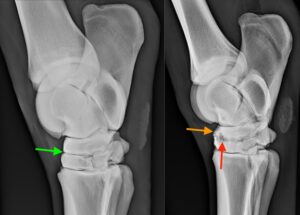Our Hospital’s Advice for Optimal Horse Health

Blister Beetles in Alfalfa Hay
Did you know that it is possible that the alfalfa hay you feed to your horses can contain a deadly bug called blister beetles? Although these deadly little bugs may only cause limited damage to the plants, they can be potentially deadly to our livestock.
What does the Blister Beetle look like?
Blister beetles are usually ½ inch to 1 inch in length and can be black, brown, gray, or even orange-striped. Blister beetles have narrow bodies with distinct necks. They also have antennas that are about 1/3 the length of their entire body.
What makes the Blister Beetle so deadly?
Blister Beetles contain a highly toxic drug called cantharidin. Cantharidin is comparable to cyanide and strychnine in toxicity. Cantharidin can cause severe skin inflammation or damage to the stomach lining, small intestine, kidney, urinary tract, and urethra. It could take less than 100 small beetles to kill a horse. Even hay that has dried juice from crushed beetles can cause symptoms.
What are the symptoms you should look for?
Your horse will show signs of colic, depression, dehydration, sweating, diarrhea, pawing, fever, and frequent attempts to urinate.
What should I do if I think my horse has ingested Blister Beetles?
If your horse is showing any of the above signs, you should call the clinic as soon as possible. Check the hay that you have been feeding your horse. A horse that has digested Blister Beetles can die within 72 hours. Early detection and treatment can improve the prognosis, but there is no “cure” for the toxin.
If you have any questions regarding this or any other issues your pet may be having, please contact our office at (505) 869-2627.
Choke in Horses
Few of us worry about choke in horses. Though it is not immediately life-threatening, choke is not something we should take lightly.
If choke is recognized and treated immediately, it is usually not serious, even though an episode can look alarming. Unlike people choking, equine choke doesn’t interfere with the ability to breathe. Choke occurs when a large mouthful of incompletely chewed food (or possibly a foreign object) becomes lodged in the horse’s esophagus. If not treated immediately, choke could require surgical intervention. It is best to contact our office as soon as you notice there may be a problem.
Your horse has a 4-foot tube that goes from his throat to his stomach, and sometimes they may swallow something that is too large to pass. When this happens, the muscles of the esophagus will contract around the object and begin to spasm, and then lock it into place. Your horse will probably show a look of panic, shake his head, stop eating, and drool a lot. In a nutshell, your horse will show signs of discomfort. Choke can occur for many reasons. One could be that your horse has difficulty chewing due to dental issues.
Regular dental exams are important and can help prevent choke from happening. Also, if you feed pellets or cubes, you may consider soaking your horse’s feed first to soften it. You can also slow down the “speed eater” by placing a salt block in the middle of the feeder. And offering bite-size treats instead of whole apples or carrots can also prevent choke from happening.
If you have any questions or think that your horse may be at risk, please call our office at (505) 869-2627, and we would be glad to answer any questions you may have.
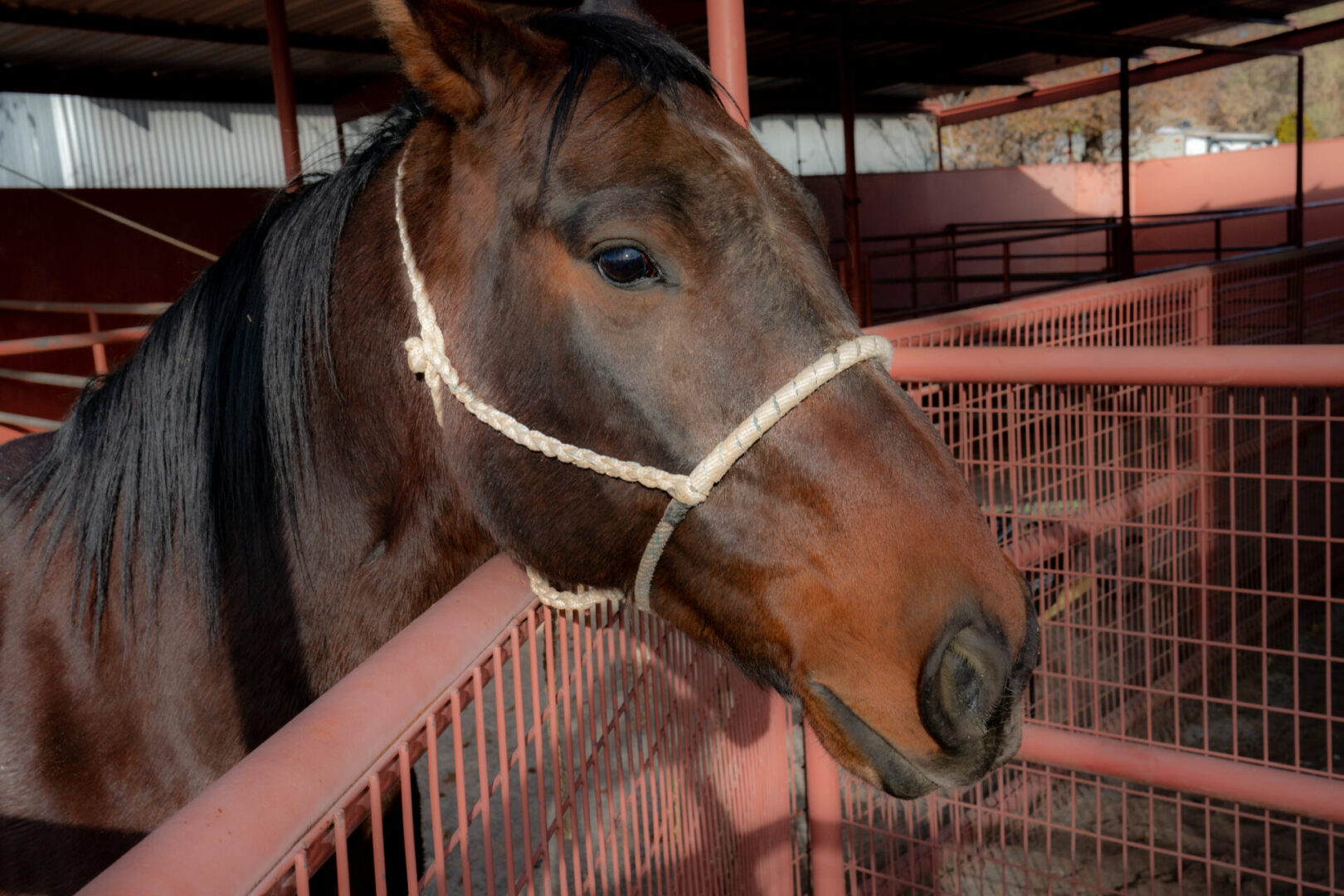
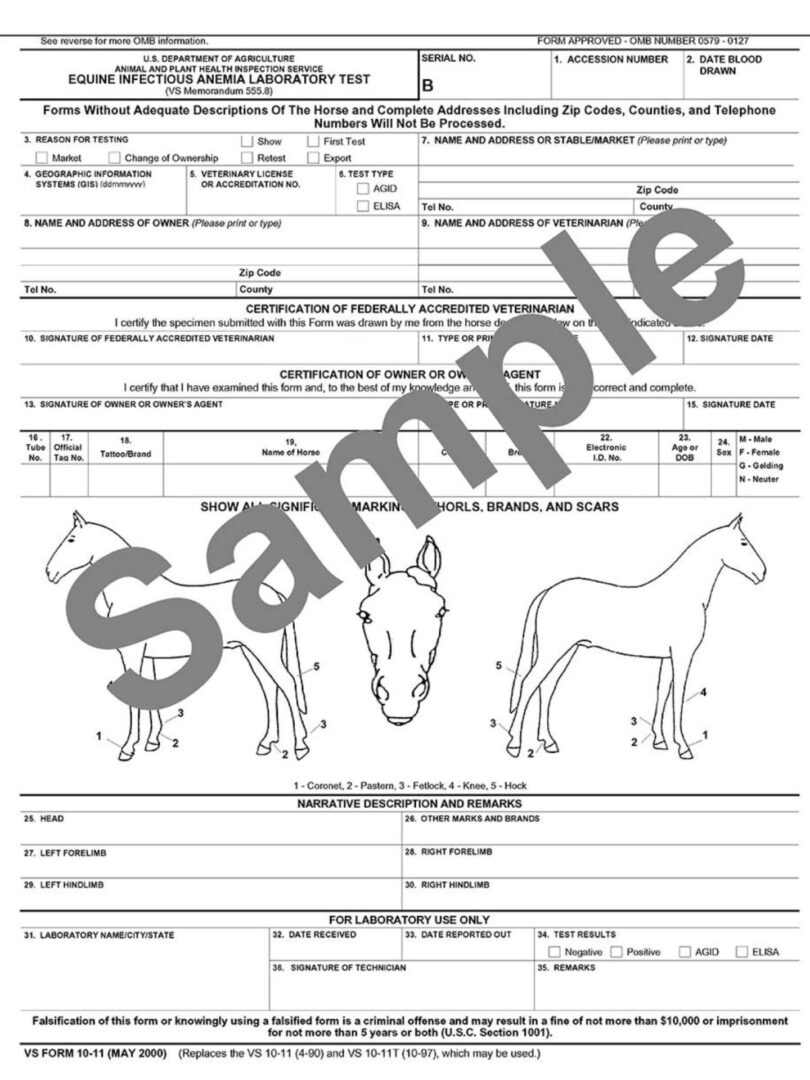
Coggins Test and Health Certificates for Horses
Are you planning a trip with your horse? Traveling over the state lines? Entering a competition? Boarding at a new stable? These are just a few reasons why your horse should have a coggins test and a health certificate.
Coggins Test:
The coggins test is a blood test used to diagnose the disease Equine Infectious Anemia (EIA) also sometimes known as swamp fever. EIA is a viral disease of horses and other Equidae such as donkeys, mules and ponies. This test was designed by Dr. Leroy Coggins of Cornell University in 1970. The test does not detect the virus itself, but it does detect the presence of antibodies in the blood. The first case of EIA was recorded in France in 1843 and North America saw its first case in 1888 in Wisconsin. In 1901 Wyoming was the site of the first extensive epidemic in the US. And the epidemic in 1947 at Rockingham Park Racetrack in New Hampshire resulted in seventy-seven horses either dying or needing to be euthanized. All states require a negative coggins test before a horse can be transported across the state line. Many competitions and sales require a negative coggins test also. And almost all of these require that the test has been performed in the last six months prior to travel, competition or sale. The EIA virus is spread through the blood of the infected horses, and infects only horses. Biting insects, especially horse flies and deer flies, carry the virus from horse to horse. If your horse has been tested positive, the state authorities are notified and the farm is quarantined and the horse is separated from the other horses and retested. If the second test confirms that the horse is infected, then all “exposed” horses are tested.
Equine Colic
Horse Colic is a term used to describe a variety of abdominal discomforts; colic can be anything from gas, a twisted intestine, an enterolith, to worm infestations.
Colic is the number one death in horses.
Colic can be caused by a number of things. Here are some of the more common causes:
Over Feeding: If your horse gets into the feed and gorges itself, colic can be a result of that.
Fine Grain: Sometimes fine grain will pack together and cause blockages in the intestine.
Sand Colic: When horses are feed on a sandy ground and ingest that sand through their feed, over time, the sand will build up in the intestines and eventually cause blockage.
Bad Feed: Moldy or rotten feed can sometimes cause colic.
Ingestion of Non-feed materials: Twine, stones, and sticks are some examples. Cribbers or horses that chew on a wooden stall have a risk of swallowing bits and getting colic.
Sudden changes in feed: Introduce new feed slowly. Example: if your horse is use to eating a grass hay and you change over to alfalfa, do it slowly.
Parasitism: Worm infestations disrupt circulation in the intestines, or blood cots and bits of dead worms may cause blockage.
Twisted Intestine: This is very severe and can be life threatening. There are a variety of twists in different areas of a horse’s abdomen.
Most colic’s can be classified as one of the following three types:
Enteritis or Ulcerations: This type of colic is caused by infections, inflammations, and disease in the intestine, which can be caused by parasites and stress.
Intestinal Accidents: This type of colic is caused by an injury or tear to the intestines.
Intestinal Dysfunction: The horse’s digestive tract is not working correctly. Impaction, paralysis, and excessive gas are examples. This type of colic is the most common type.
Signs:
The first noticeable signs of colic will be the lack of interest in eating or drinking. His/her temperature might be slightly higher than normal. You will soon notice the swishing of his/her tail, stomping of the hind leg, turn and look at his/her belly and nip and his/her sides. As the pain increases, the horse may kick at its belly, want to but unable to have a bowel movement. And as this worsens, your horse will eventually start to roll or thrash back and forth on the ground. NEVER let a horse that is colicking thrash or roll, because it could twist an intestine and cause serious injury.
Treatment:
If you suspect that your horse has colic, contact our office immediately at 505-869-2627. A simple colic can turn deadly without prompt attention. If your horse is already thrashing and rolling on the ground, get him/her up quickly and contact our office. Please remember that a colic horse can be very dangerous so be careful when trying to help your horse. If you are unable to get the horse up and he/she is pounding their head against the ground put a pillow or something soft under it until our vet can get to you. Our doctor will examine your horse and decide at that point what the best form of treatment will be for that type of colic.
Only about 10% of horses die from colic, yet it is still the leading natural killer in horses. Colic’s due to torsions and intestinal twists are nearly 100% fatal unless promptly treated. If the colic is bad and requires surgery, please decide quickly if you want to save the horse or not. For two reasons.
1. The quicker the response the better chance you have saving the horse.
2. Colics are very painful to the horse and if surgery is not an option, euthanasia is a very humane option for this type of animal.
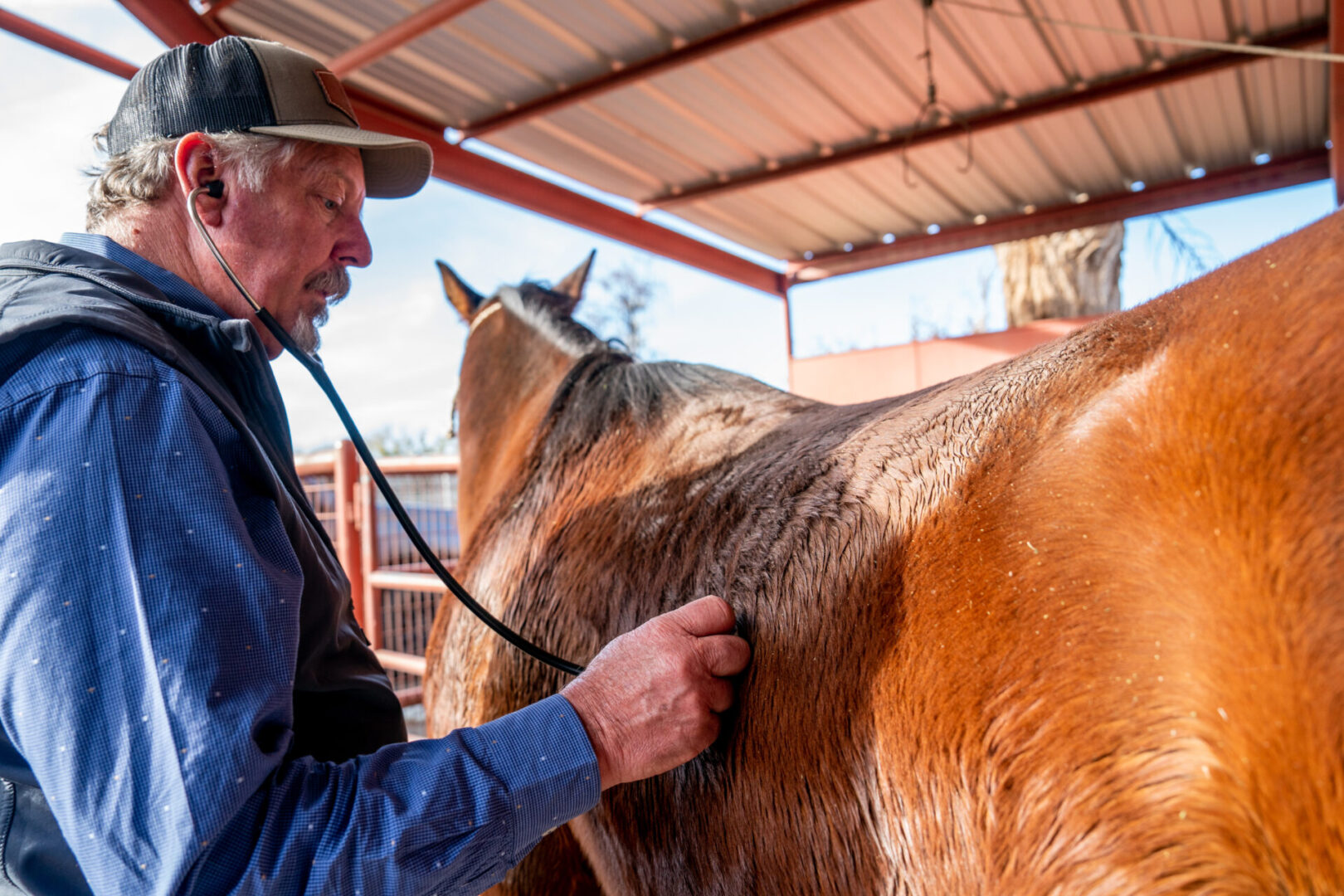
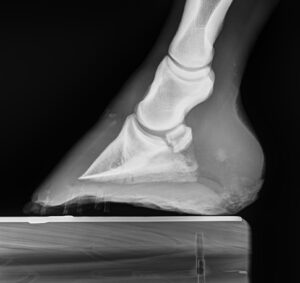
Digital Radiology
Village Veterinary Hospital is very proud to be able to offer their clients with the latest in Veterinary Technology, Digital Radiology. This service provides our costumers with accurate information and instant results.
Much like digital cameras have made photography easier and more efficient for people who are professionals (or not),
Digital Radiology provides our doctors with sophisticated imagine processing tools, giving the radiograph greater depth of information that can be manipulated or enlarged for more detail of the concerned area and without having to wait for the film to be developed, especially on house calls, in which case the film had to be taken back to the hospital and developed then,
Digital Radiology gives an image immediately at the exam site to be viewed by our clients.
Digital Radiology also requires fewer retakes. Why? Well if there is a problem with the image, for example, the radiograph is to light or to dark; the image can be computer-enhanced to fix the quality of the radiograph. With fewer retakes also provides our doctors, technicians and patients less radiation exposure.
Village Veterinary Hospital uses Digital Radiology in our hospital and on our house calls.
Fighting Equine Arthritis
Arthritis is often thought of as a condition of aging, mainly because its first outward signs tend to show up later in a horse’s life.
Many of the factors that lead to their condition is work – in the way the horse is manages – fed and ridden in their earlier years. In fact, the decisions you make about your horses care at every phase of their life ultimately affect if, when and to what extent they develop arthritis.
So starting today regardless of your horse’s age, you can start taking steps to protect your horse and their joints.
Even as young foals or weanlings, it is important to start a good program. The right diet, balanced hooves and exercise will all play an important role later in their lives.
As young horses their cartilage is still forming and is not able to withstand intense or repetitive work. Ground work is always the best training for young horses until they are mature enough to start riding.
Middle age horses should be kept in good physical condition, and proper hoof care is very important.
Products that help with maintenance of soundness include Platinum Performance, Adequan and Legend along with certain use of anti-inflamatories. Platinum Performance is an excellent nutritional supplement to assist in overall health and coat condition.
Our older horses require us as owners to always be on our toes and notice any changes. Addressing issues early is the key!! Annual visits to your veterinarian are always important but it is SO important to our older horses!
